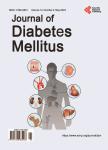Analysis of the glucokinase gene in Iranian families with maturity onset diabetes of the young
Analysis of the glucokinase gene in Iranian families with maturity onset diabetes of the young作者机构:Bu-Ali Research Center Mashhad University of Medical Sciences Mashhad Iran Immunogenetics Department Immunology Research Center Bu-Ali Research Center Mashhad University of Medical Sciences Mashhad Iran Internal Medicine Department Ghaem Hospital and Endocrine Research Center Mashhad University of Medical Sciences Mashhad Iran Mashhad University of Medical Sciences Mashhad Iran
出 版 物:《Journal of Diabetes Mellitus》 (糖尿病(英文))
年 卷 期:2013年第3卷第4期
页 面:192-198页
学科分类:1002[医学-临床医学] 100214[医学-肿瘤学] 10[医学]
主 题:Maturity Onset Diabetes of the Young 2 (MODY2) Glucokinase (GCK) Mutation SSCP PCR
摘 要:Non insulin dependent diabetes mellitus (NIDDM) as a most common form of diabetes is a major public health problem;there is a subgroup of NIDDM patients who develop the disease at an early age and show a dominant mode of inheritance. This type is nominates Maturity onset diabetes of the young (MODY). The prevalence of MODY is difficult to access, and patients with MODY genes mutations are often identified during routine screening for other purposes. MODY2 was linked to glucokinase gene (GCK) mutations, and accounted for 8% to 56% of MODY, with the highest prevalence found in the southern Europe. The aim of this study was to examine the prevalence and nature of mutations in GCK gene in Iranian paients. We have screened GCK mutations by polymerase chain reaction (PCR);single stranded conformation polymorphism (SSCP) technique in 12 Iranian families with clinical diagnosis of MODY, included 30 patients (8 males and 22 females) and their 21 family members. PCR products with abnormal mobility in denaturing gradient gel electrophoresis (DGGE) were directly sequenced. We identified 6 novel mutations in GCK gene in Iranian families (corresponding to 36.6% prevalence). Our findings and the last study on MODY1 highlight that in addition to GCK, other MODY genes such as MODY3 and MODYX may play a significant role in diabetes characterized by monogenic autosomal dominant transmission. There is an important point that the genetic recognation can be used to pre-symptomatically identify family members at risk for developing MODY.



